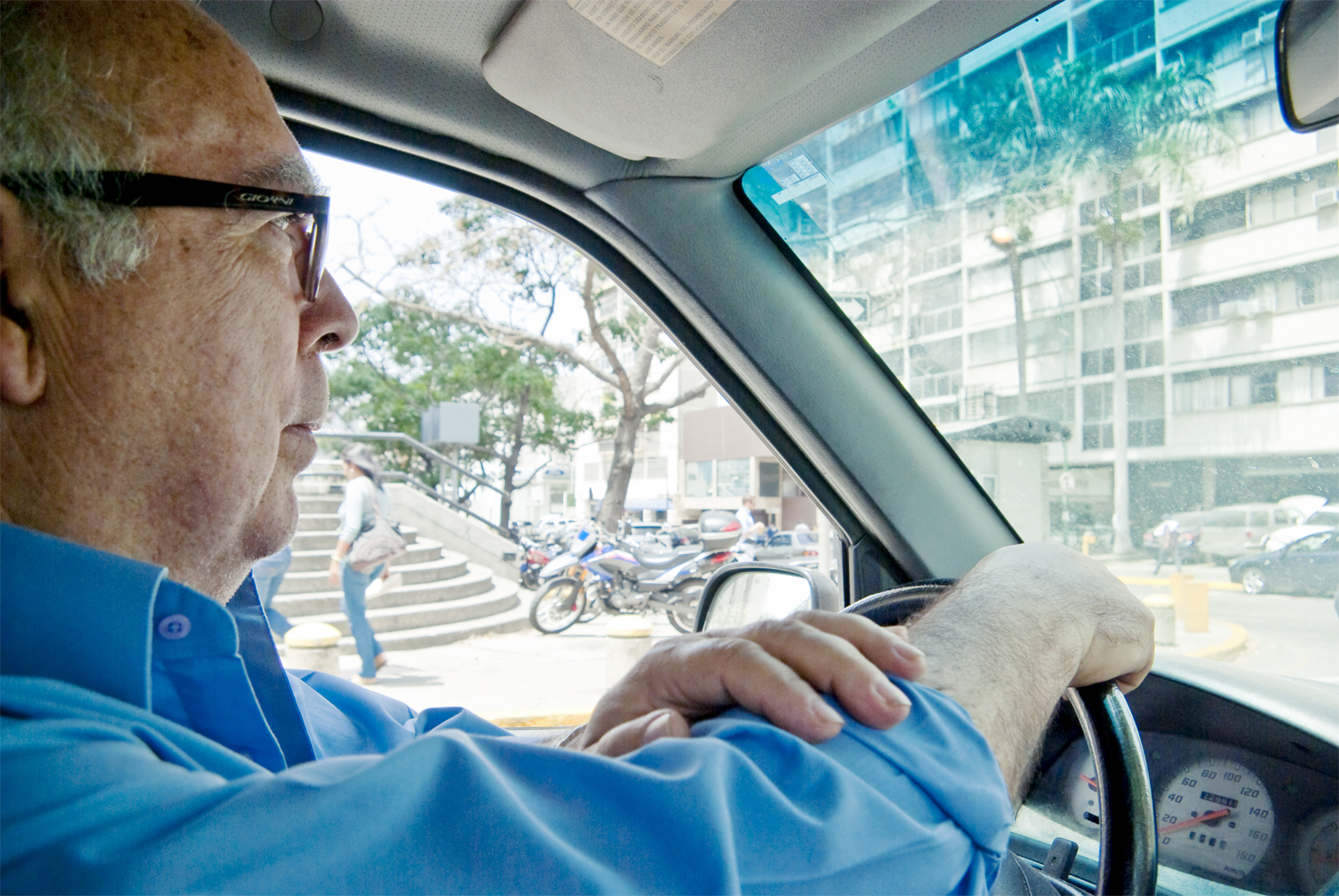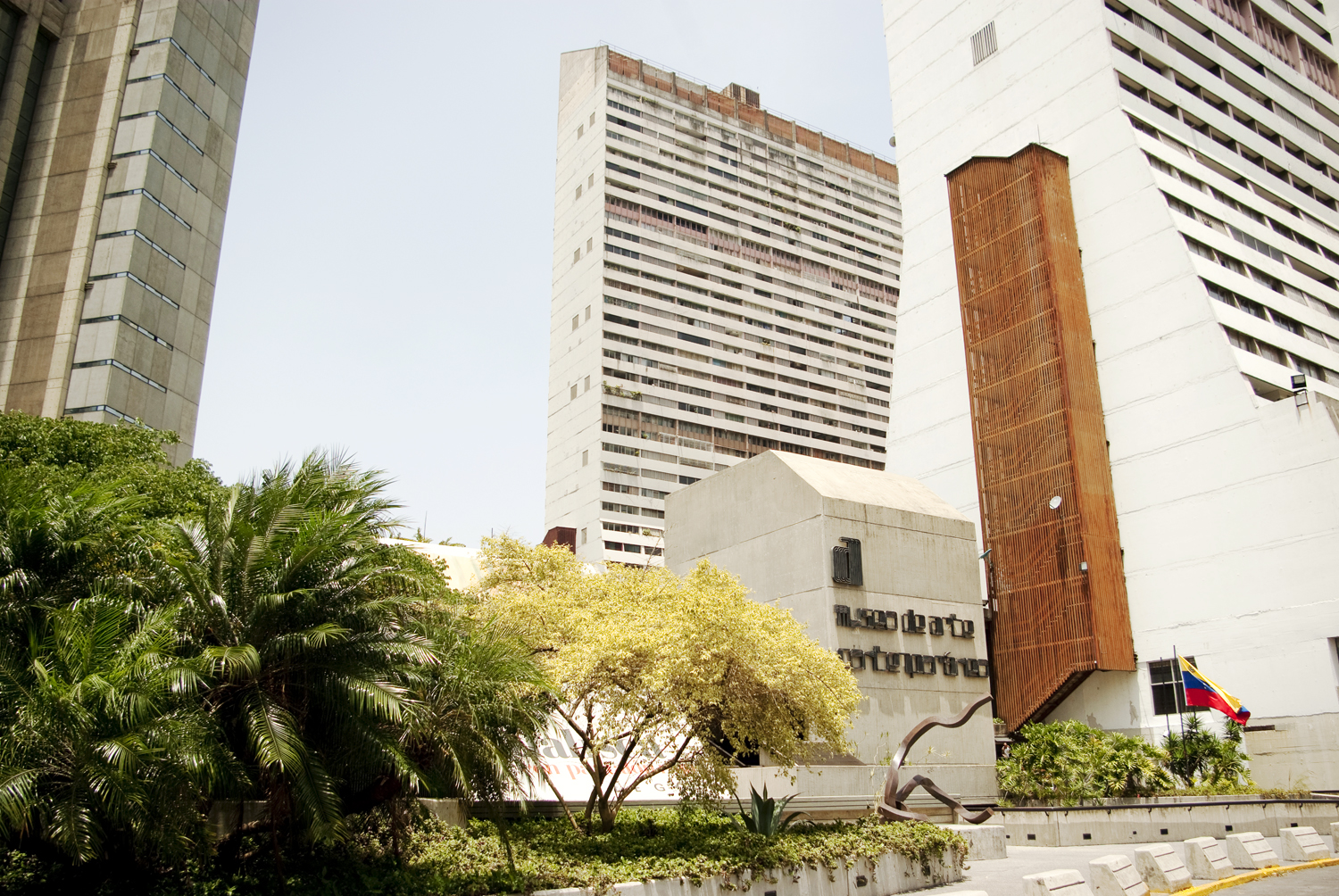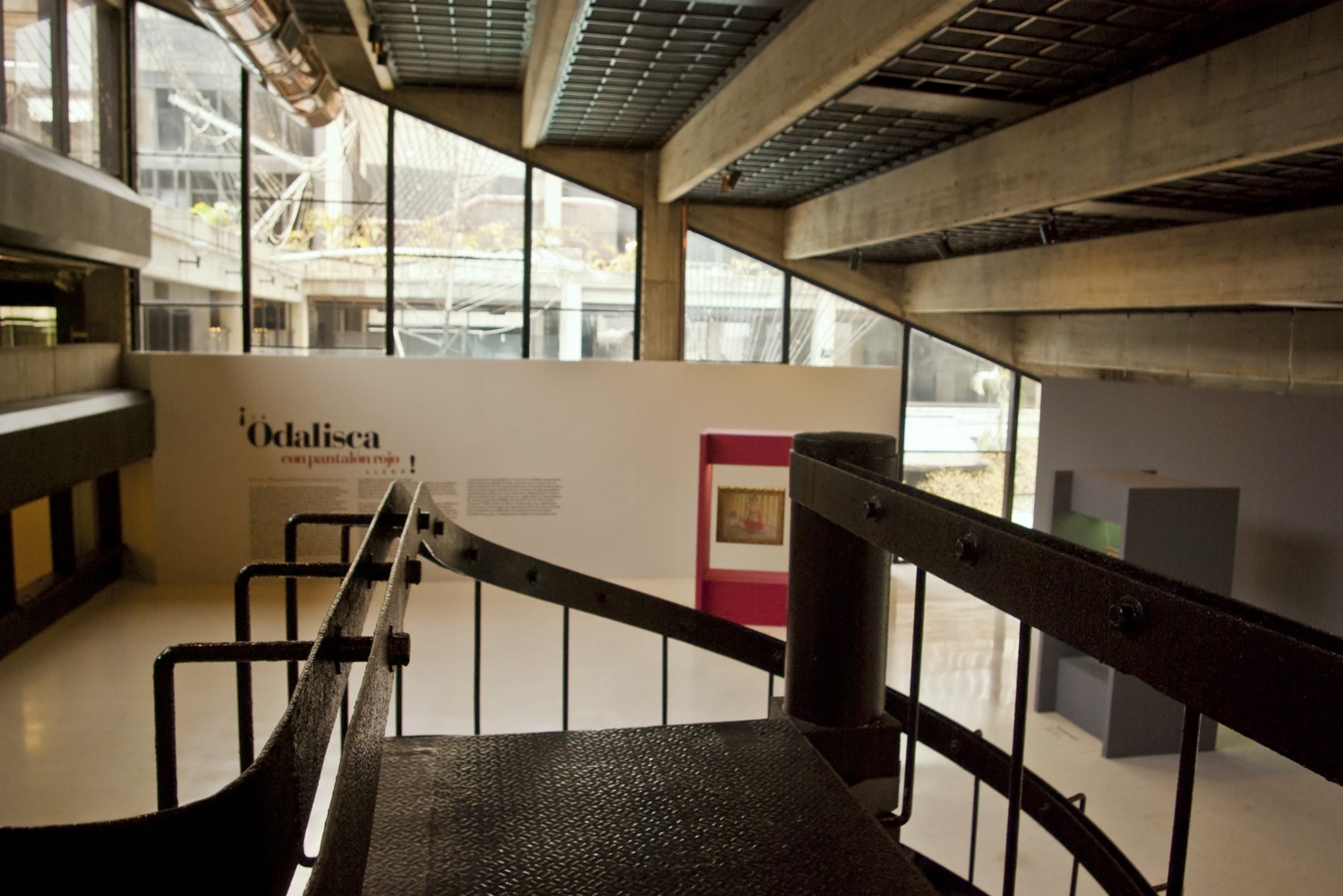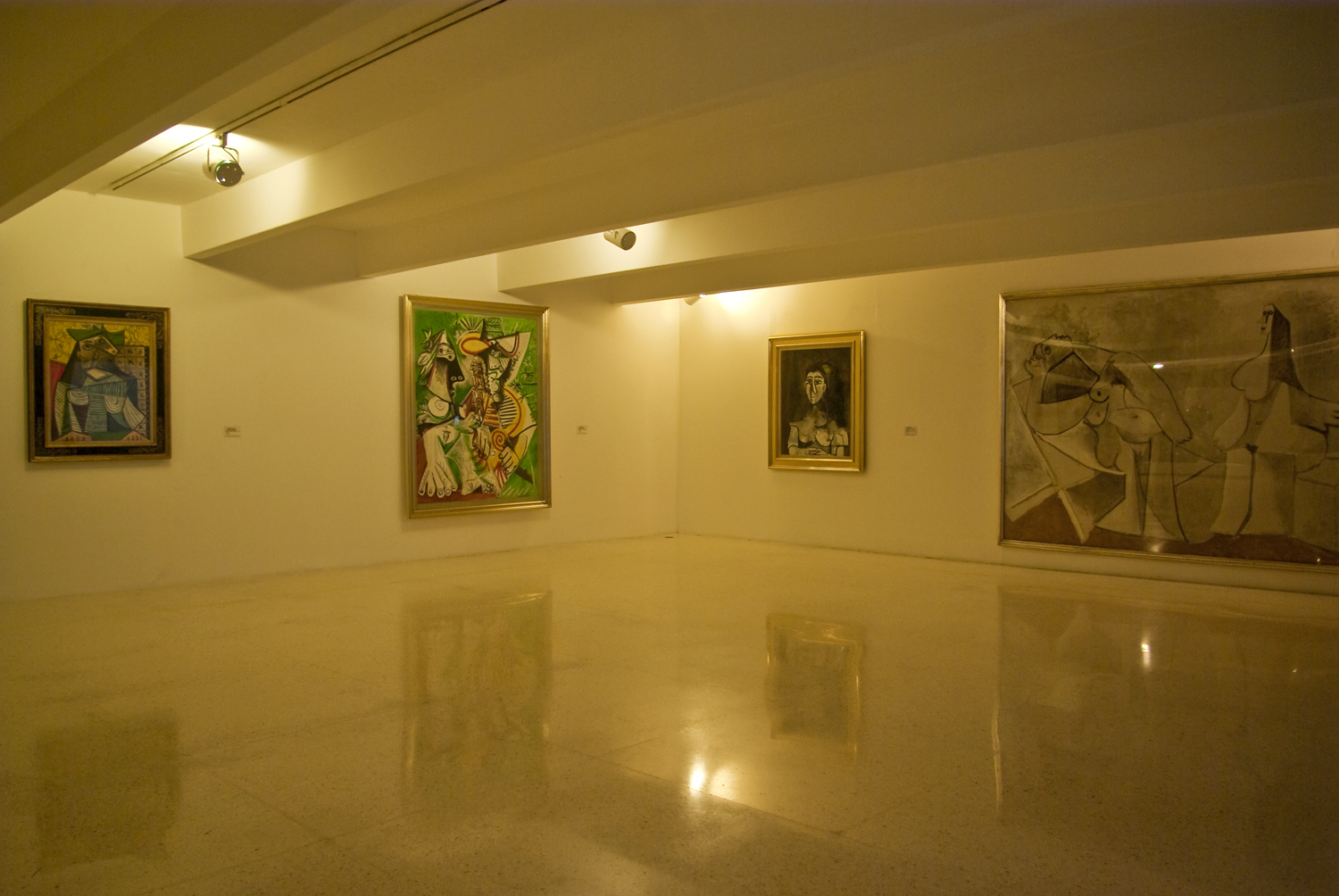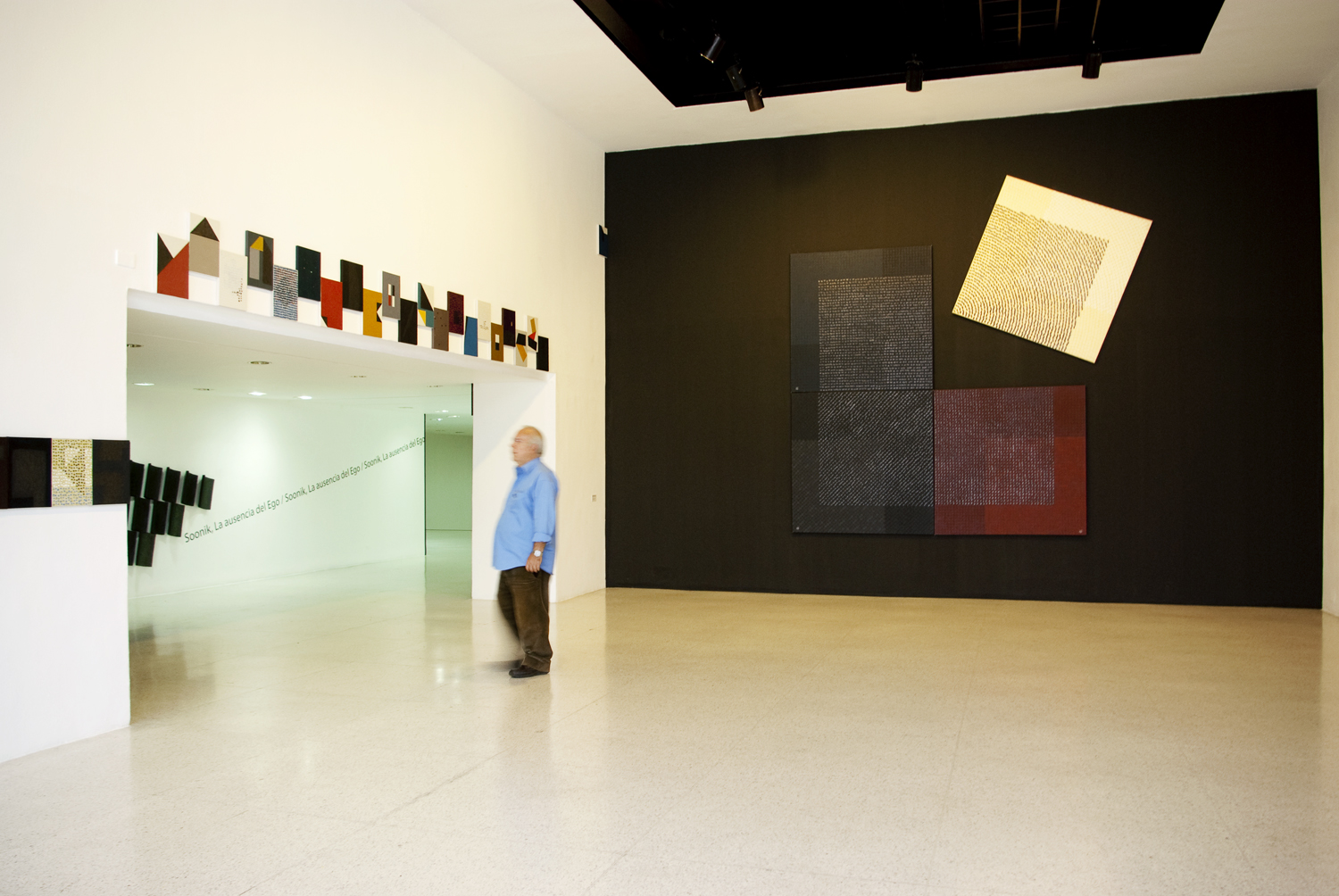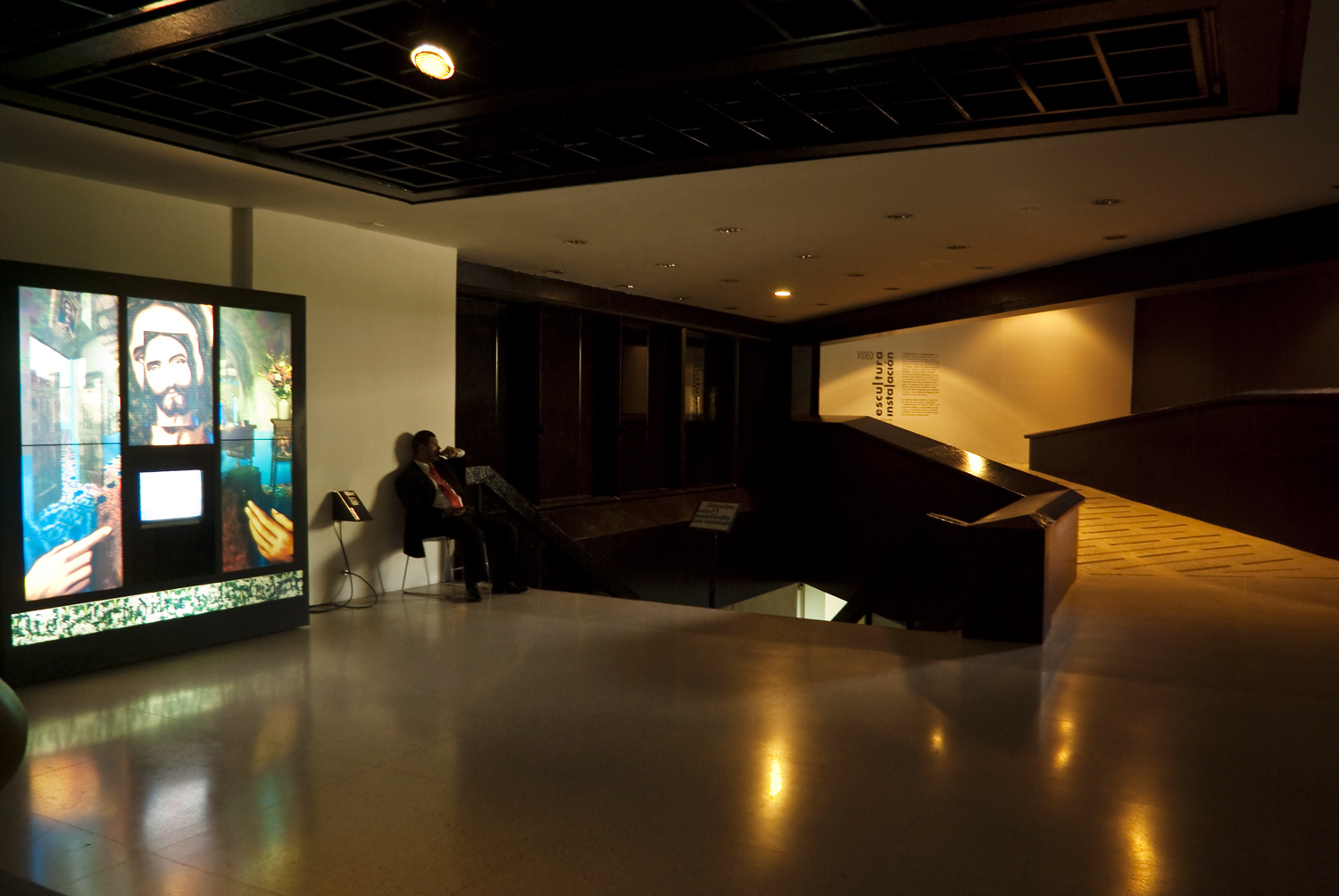The idea stems from the artwork, or rather from the assumption that the work of art can stir up things inside. But given that not every work of art produces something in anyone, one must inquire, feel, expose eye and body; submit to the experience of the senses and to chance as well. The odds are the same between works that move to speech and works that move to silence.
The calmness of museums creates a lose enough headspace for exploring something that is about to happen. But Venezuelan museums—and their permanent collections—have been turning into an opaque mystery, and are thus being substituted by small gallery circuits as preferred spaces for art consumption and contemplation. However, it happens to be difficult to separate galleries from their particular little art world dynamics of social engagement. A museum room allows for air to flow, and walking through them allows for gathering an echo of what the works produce in my guest and I. Airear la sala [Airing Rooms] is thus a curated pairing of guests and museums, that aims at catching glimpses and delving into that which moves us: art.
I decided to begin my exploration at the Contemporary Art Museum, in the company of Igor Barreto—poet, professor, and (up until recent years) public servant inside the intricate world of museums. As soon as I paired them up, I started to mentally go through Picasso’s Suite Vollard—perhaps the most iconic display in the Museum, given that it is the only complete collection in Latin America of the one hundred etchings produced by the artist between 1930 and 1937 regarding love, rupture, and war. I envisioned myself talking to Igor about the artist’s and the poet’s creation process, about the strokes and the babbling, about sketching, and about etching as a pictorial analogy of the poem and the strength—both physical and mental—required for producing the sublime.
When we met at the bookstore Igor was already paying for books; spying on him while he sniffed around shelves would have to remain as an excuse for a further occasion. We were soon seated on his green SUV, swiftly approaching Bellas Artes.
On the highway, instead of the radio, Igor turns on a transmission on his 17 years of service to the realm of museums—the Galería de Arte Nacional, the Museo Jacobo Borges, and the now extinct Museo de la Fotografía still move his sensitive fibers. Windows down, he starts telling me about his parting with museums and how he has watched them descend into decadence. His words must dodge the speeding bikers who pass us by, nearly scratching the side of the car. “They didn’t sack me by a fluke!” he says and proceeds to tell the story of his last days in public office.
«There were threats and harassment; I was being watched. Then, they stripped me of all responsibilities as an editor and shoved me into a small corner desk to write thank you notes. So I started to make use of the time for writing, for talking about a civil servant who sits in an office, in alienating, utter and useless solitude, and decides to set out to the Himalayas by means of Google Earth… That’s how Annapurna came to be. I made a huge spiritual effort to turn it into an enlightening experience, to see it from a different angle, in order to survive.”
We arrive and from the dim light of the first room emerges a sounding «Señor Igor!«. A feminine silhouette clutching a notepad approaches us and I’m sure it must be a fan of the poet, but the certainty lasts only as long as the footsteps it takes for us to meet. It turns out to be an old colleague from his museum years that had recently been transferred to the institution.
Beyond the spiraling staircase is a vast room with nothing but two paintings, 61 x 73.5 centimeters each: original and copy of Henri Matisse’s Odalisque in Red Pants, recently returned to the museum after years of mystery and pilgrimage. Igor remarks that he deems it to be a very emblematic work, not as much of the Museum itself but rather of its internal process of decay. He tells me what he knows and what he ventures about the disappearance. Displayed together, side by side, the copy boasts its coarse and vulgar making. We are shocked that anybody—especially from the Museum’s staff—might have thought for a second that it was the original. We move towards a wall text that reads: «A brief chronicle of the withdrawal and repatriation of the original painting.» To our horror, we learn that the copy was exhibited for three whole years—from 1999 to 2002—without anybody even doubting its authenticity. Igor is equally outraged by the story of ineptitude we read and by the fact that an unsigned text has been labeled as a chronicle.
A keeper invites us into a screening room where a looping video explains all the obvious differences between the original work and its copy—it seems rather redundant. «The museography focuses on a comparative analysis between the original painting and its copy,» we read—a whole room devoted to celebrating the incompetence and apathy of the very institution that now hopes to draw attention to the illegal traffic of cultural assets.
We move on to Room 3, displaying artworks from the Museum’s collection: a silver-framed Picasso taking up half a wall produces a sigh and prompts Igor to talk about Sofía Ímber. “Sofía might not be this country’s foremost art theorist, but she is, without a doubt, a woman with a privileged collector’s eye, who knew how to buy art at a time in which nobody knew what to buy and she had the contacts to do it too.” We move along works by Henry Moore, Auguste Herbin, Piet Mondrian, Alejandro Otero, Fernand Léger and Armando Reverón. A sign reads: «tempera, oil, and charcoal on canvas» and I wonder if there is ever a museum that labels Reverón’s works as «excrement on canvas,» but I save Igor the eschatology.
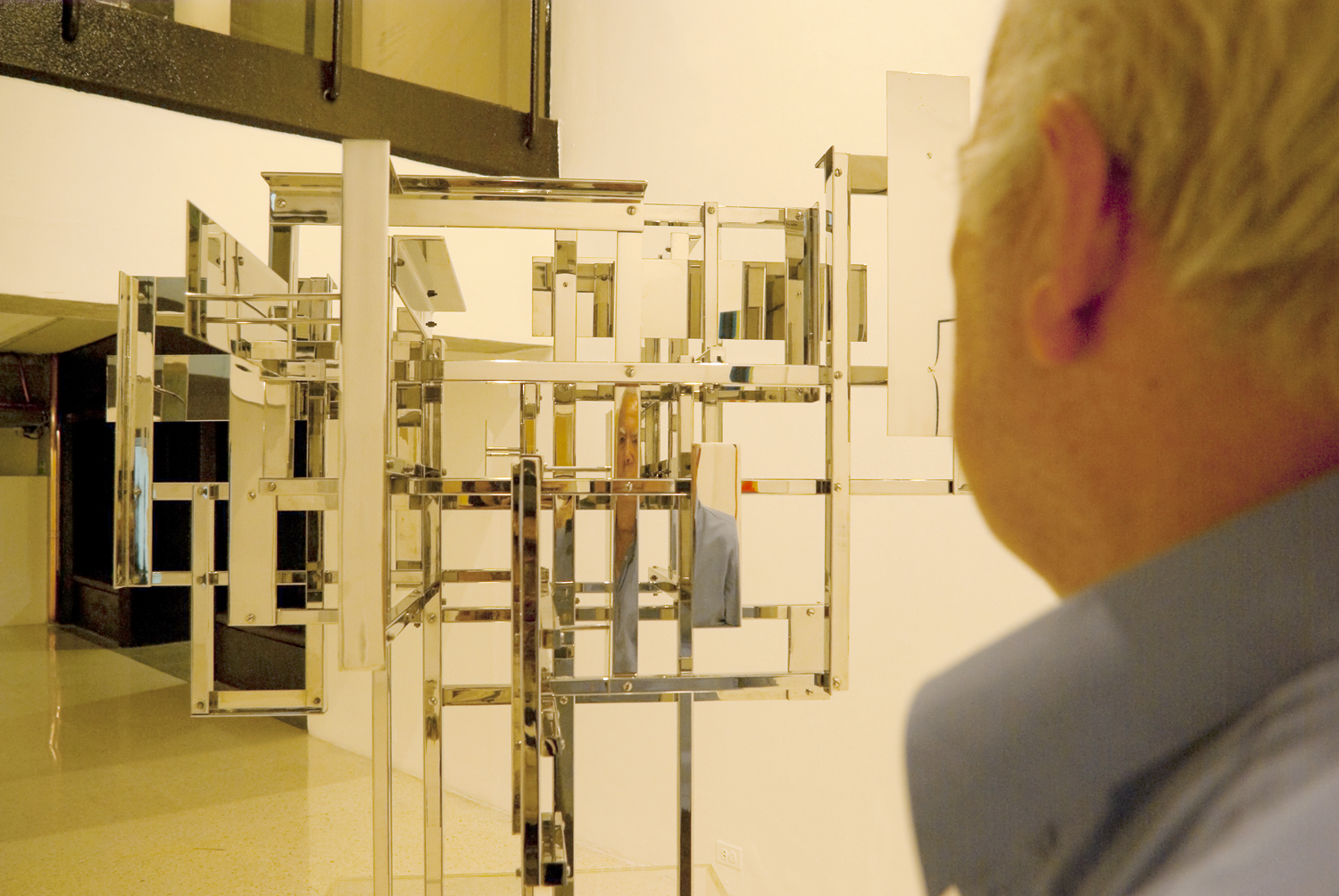
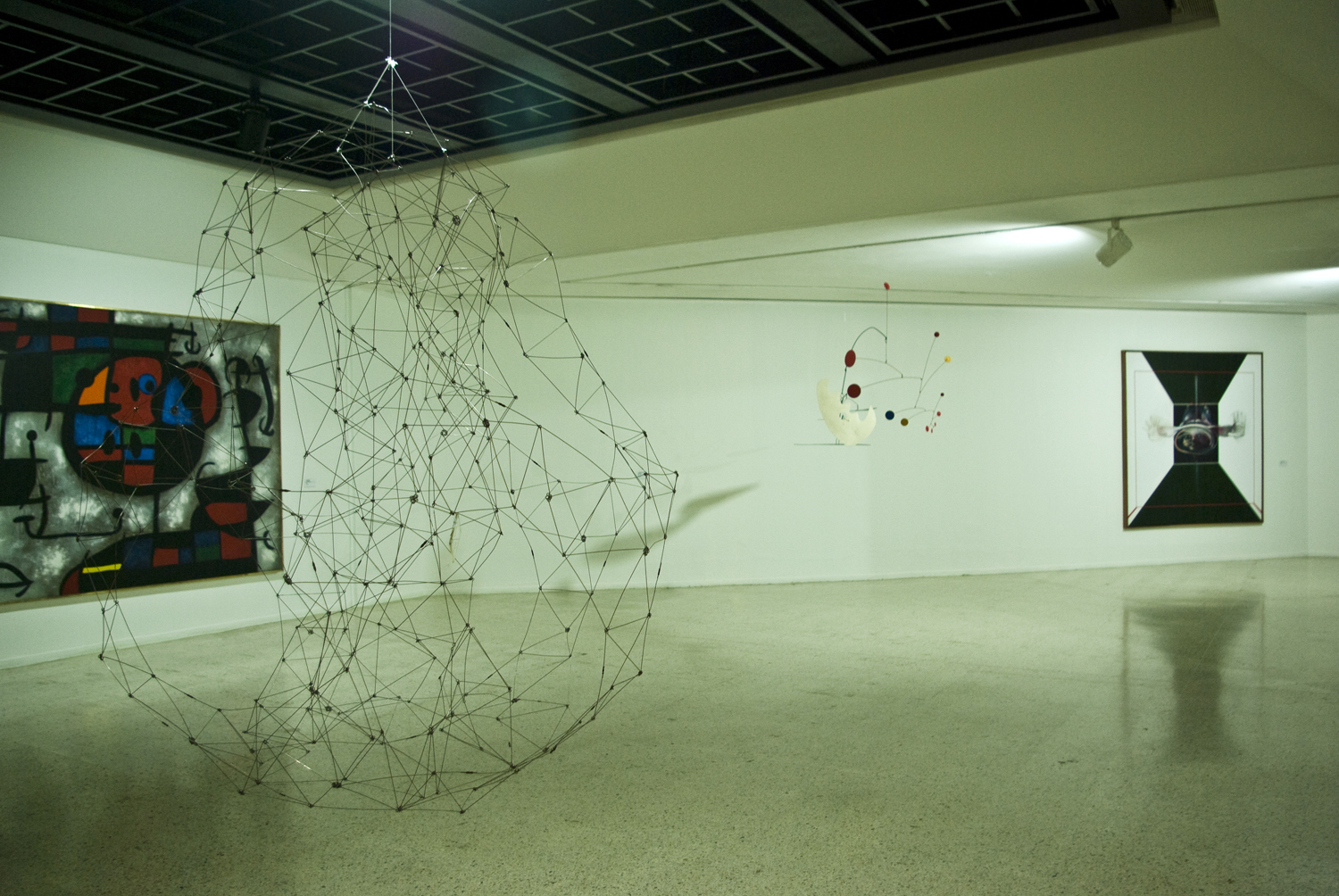
A Gego floating in white light welcomes us into Room 6. “Gego is very important to me—he tells me—because I recall some periods of my life that weren’t very financially flourishing and my Sunday amusement consisted on going to the National Gallery of Art with my three daughters to see a Gego that was installed there. It was a kind of constellated hallway where these sort of unfolding astral maps that her works sometimes convey and that gives them a very strong cosmic sense.”
Calder, Pierre Adechinsky, Pedro León Zapata, Georges Braque, Miró, Jacobo Borges and Jean Dubuffet are some of the neighbors who also suffer the punishment that is the room’s lighting. Through the lamps’ glass, we manage to make out some white energy-saving light bulbs. A work by Nicky de Saint Phalle, dated 1963-1992, bids us farewell and we realize that it is the most recent piece we have come across so far. A question arises about the contemporaneity of the museum’s proposal and about the state of the acquisitions managed by the National Museums Foundation.
We move forward, following a muffled musical thread that leads us into Room 7. We look at Soonik’s The Absence of Ego in complete silence.
Rooms 8 and 9 are downstairs; they only showcase moving image art. There, we find the most up-to-date artworks in the whole museum: Javier Téllez 1998-1999, Nan González 2003-2005—loans from other public museums to the institution,—and a 2001 piece by Alexandra Meijer-Werner and Kristin Childs Burke—the only work of art acquired in the 21st century by the Museum itself on display.
We go on, anxiously anticipating the grand finale: Suite Vollard is right below our feet. I catch sight of the staircase at the back but refuse to make sense of the sign blocking the access. Our steps alert a lonely and sleepy museum keeper who notifies us that the room is closed due to mounting. Taken aback and dismayed, I inquire whether it had been loaned, if it was being re-mounted or what. I point out that it is a permanent exhibition. He then tries hard to provide us with a plausible explanation but finds none and ends up admitting that he does not know what is going on down there, but that they are doing something, that there are indeed folks downstairs working, that they are probably cleaning the paintings or something.
Disheartened, we hope to find comfort in something yummy at the museum’s café, only to be warned by yet another member of the museum staff that that, too, is closed.
To cheer ourselves up, Igor proposes that we have lunch at one of his regular spots and we end up in an Italian joint at some street in Altamira. There, he talks to me about his college years as a Theatre and Film Theory student in Bucharest and about the summer jobs he took to travel around Europe. He tells the story of the loss of some of his papers that prevented him from going back to undertake a Ph.D. and how he, to comfort himself, had joined the Calicanto workshop and started to write poetry.






